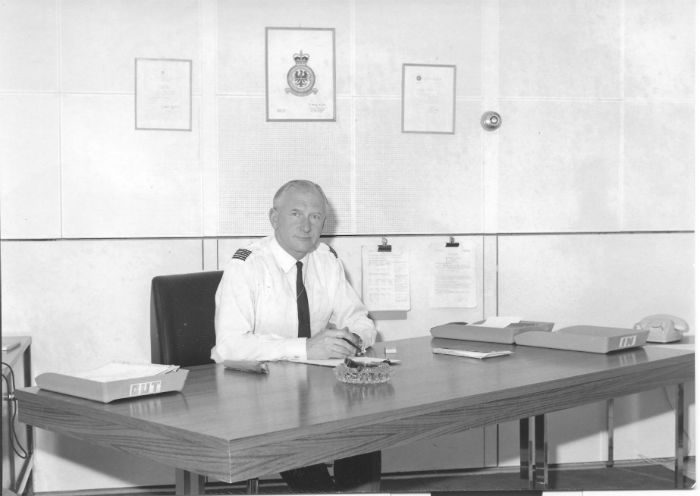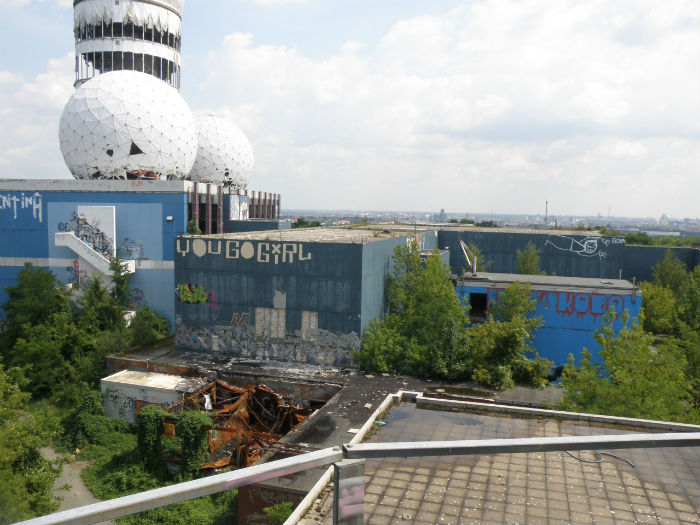Academic delves into the archaeology of espionage at famous Berlin Cold War spy base
Posted on 7 June 2019

Wing Commander Arthur Schofield was in charge of British operations at the base in the early 1970s
As the man in charge of British operations at the Teufelsberg spy base in Berlin, Wing Commander Arthur Schofield had a lot of secrets to protect.
He was Officer Commanding British operations at Teufelsberg on the edge of Berlin from 1971-3, which at the time was arguably the West’s most important electronic listening and intelligence gathering post.
Cold War
Now a magnificent ruin located in the lush and peaceful Grunewald forest, little is known of what went on there during the height of the Cold War.
Even today, most documents about the site remain highly classified, but a new book by Arthur’s son uses archaeological techniques to try and discover what went on there.
The book describes the history of the Teufelsberg through its surviving fabric, piecing together the activities that took place there during and after the Cold War.
Professor Schofield, from the University of York’s Department of Archaeology, said: “My father never spoke about the site or what he did there. I have always found this part of his life fascinating and frustrating in equal measure. It is for this reason I am constantly drawn back to the city.
“My mother also knew nothing - so that if she was captured or kidnapped she'd have no secrets to reveal.
“At that time the worries about Soviet invasion were very real. When my mother and I went into East Berlin we always had a British military police escort front and back, and we were followed from the moment we drove through Checkpoint Charlie to the moment we returned a few hours later. Sometimes we could hear shooting from our house - people being caught trying to cross the border into the West.”

The base is now a ruin located in Grunewald forest
The book, co-authored with Wayne Cocroft from Historic England, describes the way in which the spaces in Teufelsberg were used, and by whom. In the context of the well-known 'special relationship' between the USA and the UK, the study reveals that the British and the Americans worked entirely separately, in different parts of the site.
Professor Schofield added: “A single staircase and a single lockable door provide the only point of contact. There is also an area of the building dedicated to the destruction of documents, which was conducted here on an industrial scale.
“Paper was first shredded, then pulped, then removed from the site to be burnt. Dust samples from the shredders revealed microscopic pieces of carbon paper. This really is the archaeology of espionage, up close.”
Intelligence gathering
Thirty years after the end of the Cold War this book reveals for the first time details of the British contribution to intelligence gathering in Berlin, through the fabric that survives.
“The layers of history at this site tell the story of Berlin: the landscape that existed before the city was created, a Nazi academy that was never finished, a rubble mound constructed over the building comprising the ruins of a bomb-damaged city, a Cold War listening post built on top of the mound, and it’s later use by people seeking alternative lifestyles. Now a protected monument and available to visit, this is arguably Berlin’s most important site, and one we now know far more about.”
The book Archaeology of The Teufelsberg: Exploring Western Electronic Intelligence Gathering in Cold War Berlin is published by Taylor and Francis.
Prof Schofield is talking about his book at this year’s Festival of Ideas.
